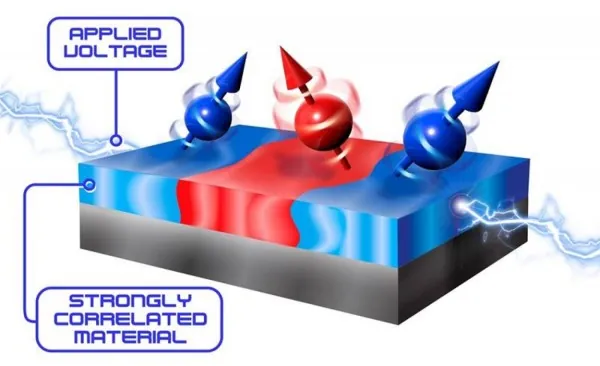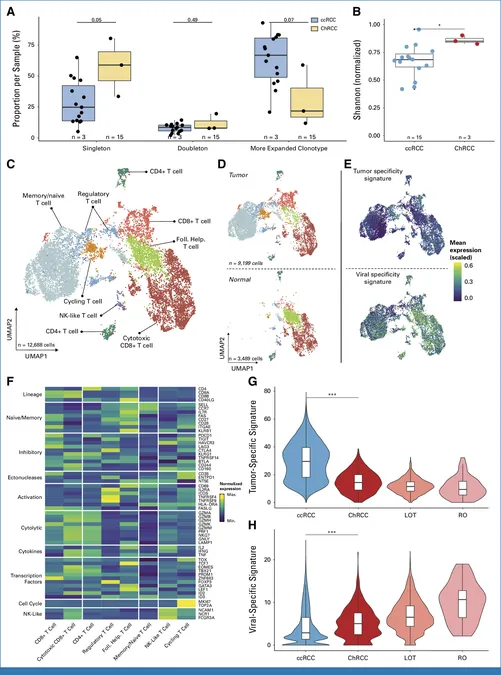
Revolutionizing Neuromorphic Circuits: How Voltage Tuning of Magnetism in Materials Like LSMO Could Change the Game
2025-01-15
Author: Mei
Unveiling the Science Behind LSMO
Researchers have recently made a groundbreaking discovery in the world of quantum materials—specifically, lanthanum strontium manganite (LSMO). This remarkable material exhibits intriguing behavior; it functions as a magnetic conductor at low temperatures but reverts to a nonmagnetic, insulating state as temperatures rise. What sets LSMO apart is its unique ability to have its magnetic properties altered through the application of voltage. This unprecedented phenomenon allows the creation of distinct magnetic regions within the same material, a feat that has historically been considered impossible.
Imagine controlling the magnetism of a material simply by applying an electric charge! This innovation opens up a plethora of opportunities, particularly in the realm of energy-efficient technologies. Normally, magnetic properties remain static, making this discovery a pivotal moment in materials science and engineering.
The Implications for Neuromorphic Computing
What does this mean for the future of technology? Tuning the magnetism and resistance of materials like LSMO lays the foundation for developing neuromorphic circuits—engineering circuits designed to emulate the way the human brain processes information. By closely mimicking cognitive functions, these circuits have the potential to revolutionize artificial intelligence.
Imagine smarter, faster devices that consume significantly less power! The dual tunability of LSMO not only allows for the switching of its magnetic properties but also its electrical resistance, paving the way for innovative neuromorphic devices that could transform the landscape of information processing.
Groundbreaking Research Techniques
The investigation into LSMO’s properties utilized a cutting-edge technique known as ferromagnetic resonance. This method reveals how various voltage levels impact the material's magnetic characteristics. During the experiments, scientists detected multiple resonance peaks, indicating the presence of diverse magnetic phases within the sample. Each phase reflected a unique oscillation frequency of electron spins, demonstrating that minor voltage alterations can lead to substantial changes in magnetic behavior—crucial for enhancing the efficacy of neuromorphic circuits based on spintronic principles.
A Path Forward
The potential applications of LSMO and its ability to toggle between high and low resistance states are monumental. This research could significantly advance the development of spintronic neuromorphic devices, combining the best of magnetic and electronic properties to foster new technological breakthroughs.
Supported by the Quantum Materials for Energy Efficient Neuromorphic Computing initiative, backed by the U.S. Department of Energy, this pioneering research paves the way for smarter and more responsive artificial intelligence, while also hinting at a future where technology closely mirrors biological processes.
Stay tuned as we continue to explore these exciting developments and their implications for the future of computing!




 Brasil (PT)
Brasil (PT)
 Canada (EN)
Canada (EN)
 Chile (ES)
Chile (ES)
 Česko (CS)
Česko (CS)
 대한민국 (KO)
대한민국 (KO)
 España (ES)
España (ES)
 France (FR)
France (FR)
 Hong Kong (EN)
Hong Kong (EN)
 Italia (IT)
Italia (IT)
 日本 (JA)
日本 (JA)
 Magyarország (HU)
Magyarország (HU)
 Norge (NO)
Norge (NO)
 Polska (PL)
Polska (PL)
 Schweiz (DE)
Schweiz (DE)
 Singapore (EN)
Singapore (EN)
 Sverige (SV)
Sverige (SV)
 Suomi (FI)
Suomi (FI)
 Türkiye (TR)
Türkiye (TR)
 الإمارات العربية المتحدة (AR)
الإمارات العربية المتحدة (AR)